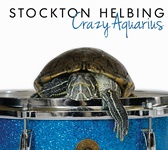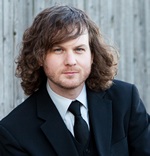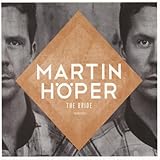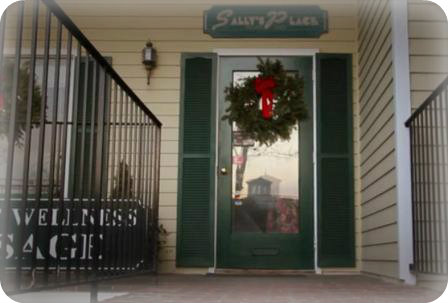Everyone says they hate making top ten lists, but everyone does it. I am among those who think it is hard to select a top ten because there is so much good music (and in fact I ended up with a top 13 list plus a supplemental list), but also sees the value in these lists as directional signals to readers. Any single list of course is not an infallible guide, as each is clearly the subjective viewpoint of one individual, but if one knows the critic/reviewer then that list has value to the reader. On the other hand, when the lists are collated and the results summed, the collective wisdom of the jazz writing public is certainly strengthened, and through the collective wisdom of the community a consensus emerges about the best of 2012.

The consensus list, the "7th Annual Jazz Critics Poll:2012" is an undertaking of Francis Davis, and currently appears on Rhapsody. It is also summarized on this link:
http://hullworks.net/jazzpoll/12/index.php.
One hundred nineteen (119) critics answered the call, and each of their ballots is on the website. But more importantly, the site shows the consensus top ten for new releases (as well as reissues, debuts, lating, and vocals). The top ten and the number of ballots that listed each recording follows:
- Vijay Iyer, Accelerando (ACT) (47)
- Sam Rivers-Dave Holland-Barry Altschul, Reunion: Live in New York (Pi) (44)
- Wadada Leo Smith, Ten Freedom Summers (Cuneiform) (37)
- Ryan Truesdell, Centennial: Newly Discovered Works of Gil Evans (ArtistShare) (23)
- Ravi Coltrane, Spirit Fiction (Blue Note) (26)
- Henry Threadgill, Tomorrow and Sunny/The Revelry, Spp (Pi) (23)
- Branford Marsalis, Four MFs Playin' Tunes (Marsalis Music) (20)
- Tim Berne, Snakeoil (ECM) (17)
- Steve Lehman, Dialect Fluorescent (Pi) (14)
- Billy Hart, All Our Reasons (ECM) (17)
So what does this tell me? There is no such thing as consensus. Even the top CD appeared on only 47/119 lists (39%), and the tenth on the list appeared on only 17 (14%). In all over 400 CDs appeared at least once! But it also tells me that there were at least a few CDs that impressed a lot of reviewers, and that free jazz is highly respected.
I have five of the top ten CDs (1,4,5,7,and 10) and am enjoying each and every one of them. I put two on my top CDs list -- Branford Marsalis and Vijay Iyer -- though none in my top ten. I did better with the next ten (11-20) -- there I have 8 of the ten and 5 among my overall recommended CDs.

What is also clear is that the critics are more adventerous than I am, and far more appreciative of the abstract and free jazz recordings. Of the five in the top ten I have, none are free jazz or even abstract jazz. Of those five, I would say that only Tim Berne's "Snakeoil" is within my range; I have listened to it, like many parts of it, but overall it just is a bit outside of my wheelhouse.
As for the others, they represent the fullest blossom the the free jazz movement and frankly I just don't understand or appreciate the sounds. But I wish I could. Sometimes I know why I don't like things: wrong instrumentation for me, squeals and skronks, meandering lines, or terrible dissonance. But none of that really seems to be the issue with some these sets.
I have played samples of the Sam Rivers disc and of the Steve Lehman disc and cannot wrap my head around them. I really want to know what it is I should be listening to, what the musicians are trying to say to me, and what the critics are hearing. When I read the reviews its clear to me I am not hearing the same things, or appreciating them. Expression is fine, but what are the musicians saying? Is is about sound and its production? about poly-rhythms and tempo? micro tones and dissonance? creating soothing atmospheres or friction? tonal quality and getting new sounds from the instruments? I just cannot latch onto it. When two reviewers I appreciate and feel comfort with, Nate Chinen and Peter Hum, put Tim Berne at the top of lists I want to understand why -- maybe I will never fully appreciate the work but at least I want to understand it.
Alas, I may be doomed. But I will not be one to say the avant-garde and free jazz is horrible, that the musicians don't know what they are doing, etc. In 2013 I am going to try to latch onto three CDs -- maybe never love them but at least feel them:
 Sam Rivers/Dave Holland/Barry Altschul "Reunion:Live in New York" (Pi 2012)
Sam Rivers/Dave Holland/Barry Altschul "Reunion:Live in New York" (Pi 2012)- Wadada Leo Smith "Ten Freedom Summers" (Cuneiform 2012)
- Steve Lehman Trio "Dialectic Fluorescent" (Pi 2012)
Why all this angst? What brought this on? I read a couple of posts recently where others wrestled in a small way with some of these issues, and in particular one post that discussed Michael Formanek. In that post, on the site "
The Bird is the Worm", the writer indicated that he had not liked Formanek's last recording
"The Rub and the Small Change" (ECM 2010) but did like the new one,
"Small Places" (ECM 2012) I too did not like the first of the two CDs, but had just been told I might like the second by somebody I trust who more or less knows my inclinations.

With those two people in mind, I bought "Small Places" and have listened to it a few times now. I find it much more interesting and enjoyable, with reservations, than the previous outing. But does it fall into my comfort zone? Here are my track by track impressions which are a bit in a stream of conciousness mode as I wrote them as I listened.
"Small Places" starts the CD with a very nice piece that begins with some unison sax and piano, and then a very strongly played piano solo. The entire piece has a particularly moody undertone I liked, and overall it felt well organized and held together well for me.
"Pong" gets off to a nice start as well with another mellow tune, some call and response between the sax and bass, and clearly unified group play. The starting phrases begin to get repetitous, and then there is a build-up where the playing gets harsh and less pleasing; however, this suddenly breaks and then a really nice piano part backed by very strong drumming begins, which resets the mood. The piece then returns full-cycle to the entry phrases as it ends.
"Parting Ways", the third piece, is the most extended but also a very sonically interesting piece that builds in intensity over 18 minutes. I loved the first 8 minutes or so, which featured some very quiet, meditative play and an almost eerie, mysterious atmosphere. Gradually the piece builds and Berne's saxophone takes control, rising in a fevered pitch at about the 9 minute mark for a run of about 4 minutes. This is where I lost my bearings and interest. But then the piece changed again at the 12 minute mark to a much smoother interplay of all of the group members, although Berne was still out in front on the melody. At 14 minutes a really strong bass part emerges from the background and Formanek takes off on an extended lead with the backing of an energetic drum set. At 16 minutes the bass diminishes and the other players gradually re-emerge, first in the background but then with more force as they lead the piece to its conclusion. I hung in there, there is a lot of really nice stuff, and for the most part the music held together for me without wandering off.
"Rising Tensions and Awesome Light" begins dramatically with the sax and piano playing some simply phrases with lots of open space. The tension of the title feels palpable as it is uncertain where the music is going to go. Two minutes in and it still feels like a build-up to something else. Formanek plays a very nice bass part that emerges right about then, with some light cymbal support. As the tension builds the piano comes in for some short phrases that gradually fill out, and still the music feels like it is being held back, reined in, and is ready to burst. The playing is very nice, the piano part gets more lush as it proceeds and the rhythm support becomes bolder. I am liking the piece, its textures, and its sensiblities. At the 4 minute mark the sax comes in, the piano recedes and the music continues with the same mellow tempo. The sax begins to emerge more fully, the lines extend, and the play becomes more urgent though not harsh, with the notes coming faster and faster. The piano plays some chords and then some melodic lines behind the sax and gradully the tension is turned up. At the 7 minute mark the heat is building, the piano is emerging as the sax sound grows and harshens. No resolution is in sight, just a continuing build up and tension through 8 minutes. Finally, the music recedes for about two bars and then just ends. An exhausting tune -- definitely rising tensions, but not so sure I saw the awesome light.
"Slighty Off Axis" follows. The tension from the last track is quickly dissipated by a quiet start to this track. The piano picks out a simple tune, the bass plays a series of very intriquing notes underneath, and the drummer uses brushes to color the mood. Quite a difference from the previous piece, far more relaxing and contemplative, a quite welcome. This is clearly why one should listen to a CD as a whole and not piece-meal; the ordering, and tension and release, are clearly a big part of this set. The piece continues quietly with a strongly played bass part and no sax. It feels almost like a palate cleanser. When Berne does emerge, he does so simply and quietly at the four minute mark, and plays in unison with the piano. The sound begins to harshen again just as the piece fades to black. Overall not a piece that "goes" anywhere, rather a perfect piece that shapes a new sensibility for the set after the last piece.
"Seeds and Birdman" is another slow evolving piece, although the sax comes in much earlier. Over 12 minutes it weaves and wobbles in various directions, led by Berne's plaintive cries on his instrument. This one wanders more than I prefer but maintains its interest as it shapes and reshapes the dynamics among the partners. Berne and Taborn go in and out of the piece, shaping each section. At 3 minutes Taborn begins a lovely tune with long lines and legato play, backed by simple effects from the drumset. The pace quickens throughout which only enhances the beauty of this section, my favorite on the CD, which ends just after the 7 minute mark, when Berne comes in with his solo section, which is equally mellow. At first supported by the others, they gradually fade out and Berne plays a cappella for a while, spinning out his tune with only an occasional note from the bass.The others gradually return as Berne's solo gets more urgent and intense, then there is a break and the piece comes to a close.
The next piece,
"Wobble and Spill" starts soft and lovely with a soulful saxophone part supported by charming piano notes and simple coloration from the bass and drums. Very slow and melodic, at this point I am understanding how much of this CD is about tension and release, be it within one song or in the order of the songs. Six plus minutes of simple beauty, point and counterpoint between the piano and sax. Never really goes anywhere as a melody but that is fine -- it is clearly a piece for contemplation, for mood, and for release.
Finally "
Soft Reality", the last piece. Once more it begins with a simple piano part, quietly and peacefully. A bowed bass follows which increases the beauty and restfulness. Formanek plays his part magnificently, quietly restoring balance to the universe, and capturing the mood expressed in the song's title. Formanek caresses each note and Taborn supports him with simple accents along the way. When Taborn enters along the way at 4 minutes he gradually takes over the lead. He goes into his upper register, and while the play is subdued and slow, the harsh sound of the alto in that register feels out of place to my ear. He later returns to his lower register, where the music feels much more unified among the quartet members. The mood is restored as the tune comes to its conclusion.
So what do I feel? I think on balance I appreciate the CD but do not love it; I like it and will listen to it but cannot say it would be on the top of my pile. There are parts that are lovely to listen to, but other parts that are harsh to my ear, which in part is my preference for the tenor over the alto sax, which I find harsh in its upper register.
 Bee Jazz is a french label that has produced some outstanding music, and the 2012 recording "Silences" (Bee Jazz 2012) by Guillaume de Chassy is another. De Chassy is a pianist, and he is joined here by Thomas Savy on clarinets and Arnault Cuisiner on bass. Those of you who may have heard last year's duo recording "DaVinci" by Fred Hersh and Nico Gori on Bee Jazz will see similarities, with the same elegance in this chamber jazz recording.
Bee Jazz is a french label that has produced some outstanding music, and the 2012 recording "Silences" (Bee Jazz 2012) by Guillaume de Chassy is another. De Chassy is a pianist, and he is joined here by Thomas Savy on clarinets and Arnault Cuisiner on bass. Those of you who may have heard last year's duo recording "DaVinci" by Fred Hersh and Nico Gori on Bee Jazz will see similarities, with the same elegance in this chamber jazz recording.  Pablo Held, too, continues to produce very strong recordings on Pirouet, the latest being "Pablo Held Trio Live" (Pirouet 2013) with Robert Landfermann on bass and Jonas Burgwinkel on drums. Held wrote all six melodies, which range from the 2:56 of the charming "Meta" to 16:27 for "Klartraum", the CD's clear highlight with its multi-rhythms and room for each player to step out.
Pablo Held, too, continues to produce very strong recordings on Pirouet, the latest being "Pablo Held Trio Live" (Pirouet 2013) with Robert Landfermann on bass and Jonas Burgwinkel on drums. Held wrote all six melodies, which range from the 2:56 of the charming "Meta" to 16:27 for "Klartraum", the CD's clear highlight with its multi-rhythms and room for each player to step out.  Not a month seems to go by without a new one by John Zorn, sometimes as composer, sometimes as player, and sometimes both. On "Filmworks XXV" (Tzadik 2013) he is both, composer and pianist, actually one of three solo pianists along with Israeli pianist Omri Mor and Rob Berger. The pieces are exquisite, touched with some of the sounds of Israeli/Middle Eastern musical scales and chordings, and widely varied in tempo, dynamics, and tone. I highly recommend that folks take a listen and not be scared off by the name Zorn, who once again demonstrates his soft, emothional side herein.
Not a month seems to go by without a new one by John Zorn, sometimes as composer, sometimes as player, and sometimes both. On "Filmworks XXV" (Tzadik 2013) he is both, composer and pianist, actually one of three solo pianists along with Israeli pianist Omri Mor and Rob Berger. The pieces are exquisite, touched with some of the sounds of Israeli/Middle Eastern musical scales and chordings, and widely varied in tempo, dynamics, and tone. I highly recommend that folks take a listen and not be scared off by the name Zorn, who once again demonstrates his soft, emothional side herein.  I have three recordings by Pamela Hines, and her latest "3.2.1" (Spice Rack Records 2012) is another fine example of her play. With Yoron Israel on bass and Dave Clark on drums, the trio goes through a set of nine songs from such composers as Bill Evans, Todd Dameron, and Julie Styne/Sammy Cahn. This menu of classic pieces is the deaparture point for some imaginative play by Hines, with especially lovely renditions of "Spring Can Really Hang You Up the Most" and "East of the Sun" at moderate tempos, "Loose Blues", and the up tempo play of "If You Can See Me Now." The trio clearly enjoys the music and the energy is transmitted to the listener throughout, making this a nice set for those who enjoy classic trios.
I have three recordings by Pamela Hines, and her latest "3.2.1" (Spice Rack Records 2012) is another fine example of her play. With Yoron Israel on bass and Dave Clark on drums, the trio goes through a set of nine songs from such composers as Bill Evans, Todd Dameron, and Julie Styne/Sammy Cahn. This menu of classic pieces is the deaparture point for some imaginative play by Hines, with especially lovely renditions of "Spring Can Really Hang You Up the Most" and "East of the Sun" at moderate tempos, "Loose Blues", and the up tempo play of "If You Can See Me Now." The trio clearly enjoys the music and the energy is transmitted to the listener throughout, making this a nice set for those who enjoy classic trios.  Stockton Helbing's "Crazy Aquarius" (Armored Records 2012) is exactly that, a bit crazy but incredibly joyful. This is a sextet that included
Stockton Helbing's "Crazy Aquarius" (Armored Records 2012) is exactly that, a bit crazy but incredibly joyful. This is a sextet that included  Helbing on drums, Paul Tynan on trumpet/flugelhorn, David Lown on tenor sax, David Braid on piano, Noel Johnston on guitar (three tracks only), and James Driscoll on bass. Braid is the name I recognized, from last year's outstanding solo piano effort, and he contributes in equal parts with the horn frontline in creating some vibrant melodies and counter melodies, all of which are Helbing originals. There are some moments of craziness at times, but overall this is just a great romp through some wonderfully melodic modern jazz. When three songs in a row are "The Night Before", "The Morning Of" and "The Day After" you know you are in the hands of a fun-loving leader, and that is the case throughout this infectous trip.
Helbing on drums, Paul Tynan on trumpet/flugelhorn, David Lown on tenor sax, David Braid on piano, Noel Johnston on guitar (three tracks only), and James Driscoll on bass. Braid is the name I recognized, from last year's outstanding solo piano effort, and he contributes in equal parts with the horn frontline in creating some vibrant melodies and counter melodies, all of which are Helbing originals. There are some moments of craziness at times, but overall this is just a great romp through some wonderfully melodic modern jazz. When three songs in a row are "The Night Before", "The Morning Of" and "The Day After" you know you are in the hands of a fun-loving leader, and that is the case throughout this infectous trip.  Martin Hoper "The Bride" (Hoob Jazz 2012) is a trio recording by Hoper on bass, Jonas Ostholm on piano, and Chris Montgomery on drums. This is another Scandanavian piano trio but that is not a bad thing. While they carry forward the same general ethos of their compatriots, the writing is imaginative and play impassioned. The tunes range from the somber "Olmed", a quiet blues "The Boys in My Hood", to a more jazz-like "Cilantro" and "Muttileinen." All in all a lovely set especially for those who enjoy Scandanavian/Northern European trios.
Martin Hoper "The Bride" (Hoob Jazz 2012) is a trio recording by Hoper on bass, Jonas Ostholm on piano, and Chris Montgomery on drums. This is another Scandanavian piano trio but that is not a bad thing. While they carry forward the same general ethos of their compatriots, the writing is imaginative and play impassioned. The tunes range from the somber "Olmed", a quiet blues "The Boys in My Hood", to a more jazz-like "Cilantro" and "Muttileinen." All in all a lovely set especially for those who enjoy Scandanavian/Northern European trios. 






















 1991, with Jay Anderson and Adam Nussbaum (check out the hair!)
1991, with Jay Anderson and Adam Nussbaum (check out the hair!)





